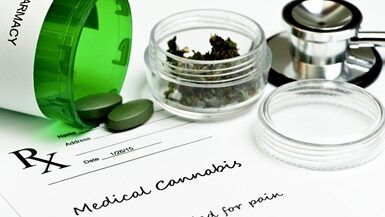Terpenes

Understanding terpenes, especially in the context of cannabis, is crucial for new patients in Florida looking to explore their therapeutic potential. Terpenes are aromatic compounds found in many plants, but they are particularly notable in cannabis, where they play a significant role in shaping the plant’s effects, flavor, and aroma. For patients, getting acquainted with terpene profiles such as myrcene, limonene, and pinene can significantly enhance their medicinal cannabis experience. These profiles not only contribute to the sensory experience of cannabis but also possess unique therapeutic effects that can aid in treating various ailments.
Myrcene, for example, is known for its sedative and relaxing properties, making it ideal for patients suffering from insomnia or anxiety. Limonene, with its citrusy aroma, is believed to uplift the mood and relieve stress. Pinene, on the other hand, offers a pine-like aroma and may help with memory retention, alertness, and even asthma. Understanding these terpenes and their effects allows patients to choose cannabis strains more effectively at their local dispensary, tailoring their selection to their specific health needs.
Navigating the world of cannabis terpenes can be a transformative journey. Dispensaries in the state are increasingly focusing on educating their clients about terpene profiles and their importance. By gaining knowledge about terpenes, patients can make informed decisions that optimize the therapeutic benefits of their cannabis use. This awareness not only enhances the effectiveness of treatment but also enriches the overall experience with cannabis by harnessing the power of terpenes to address individual health concerns.
Understanding the Differences Between Cannabis Edibles
Cannabis edibles come in various forms and are increasingly popular for their ease of use and longer-lasting effects compared to smoking or vaping. However, not all edibles are the same. Understanding their differences can help users choose the right product for their needs. Here are the key types of cannabis edibles:
THC vs. CBD Edibles
The most basic distinction is between THC (tetrahydrocannabinol) and CBD (cannabidiol) edibles:
- THC Edibles: These provide the psychoactive “high” commonly associated with cannabis. THC affects the brain, leading to effects such as euphoria, relaxation, or altered perception.
- CBD Edibles: These do not produce a high and are often used for pain relief, anxiety reduction, or improving sleep without affecting mental clarity.
Infused Foods vs. Drinks
Cannabis edibles come in different formats, including food and beverages:
- Infused Foods: These include gummies, brownies, chocolates, cookies, and other snacks. They often take longer to take effect (30 minutes to 2 hours) as they are digested through the stomach.
- Cannabis-Infused Drinks: These range from sodas to teas and tonics. Drinks may kick in slightly faster than food edibles, typically within 30 minutes to 1 hour.
Sublingual Edibles
Sublingual edibles are designed to dissolve under the tongue, such as lozenges, tinctures, and oral strips. They are absorbed through the mouth’s mucous membranes, leading to quicker effects (within 15 to 45 minutes) than traditional food edibles.
Dosage Variations
Edibles are available in varying doses, with products ranging from low-dose (2.5-5 mg of THC) for beginners, to higher doses (10 mg or more) for more experienced users. It’s important to start with a low dose and wait for the effects before consuming more, as edibles can take longer to kick in than smoking or vaping.
Onset and Duration
- Onset: The time it takes for edibles to take effect can range from 30 minutes to 2 hours, depending on the type of edible and how it’s processed.
- Duration: Edibles typically last longer than smoked or vaped cannabis, with effects lasting anywhere from 4 to 8 hours or more.
Remember, when choosing cannabis edibles, consider the type of cannabinoids (THC vs. CBD), the format (food vs. drinks), and the dosage that fits your experience level. Start with low doses, and be patient with the onset time to avoid overconsumption.
